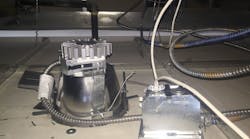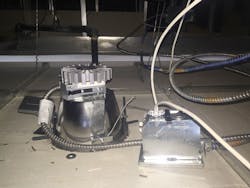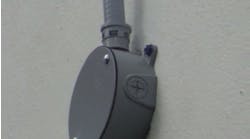How well do you know the Code? Think you can spot violations the original installer either ignored or couldn't identify? Here's your chance to moonlight as an electrical inspector and second-guess someone else's work from the safety of your living room or office. It's your turn to identify the violation.
Hint: Don’t rush to judgement
Scroll Down to Find the Answer
EC&M reader Bill Gatewood was kind enough to share this photo with us. In his words, this is a “new LED install with many problems.” He goes on to say, “Wrong rough-in frame, no support wire to ceiling, and ballast not supported.” It certainly seems as though the installer may have rushed through this installation and did not put the finishing touches on it.
Section 410.30(A) requires luminaires to be securely supported. I am not so sure that relying on a removable ceiling tile as the sole means of support will meet this “secure support” requirement. Section 410.36 does permit the use of framing members of suspended ceilings to be used as a supporting means for luminaires where the luminaire is securely fastened to framing members, which are securely fastened to each other and to the building structure.
It also appears as though several MC cables are lacking the proper support, as required by Sec. 330.30. Generally speaking, these MC cables must be supported and secured at no greater than 6-ft intervals.
Cleaning up the debris that was scattered on the ceiling tiles is part of the “neat and workmanlike” requirements stressed in Sec. 110.12. It’s another indication that this installer may have been in a rush to get the job done.





